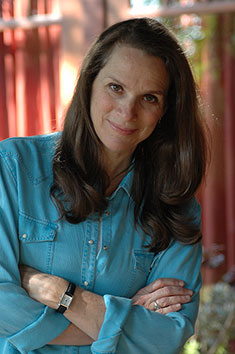 THERE is, perhaps, no better way of understanding the history of Los Angeles than by walking its Backbone Trail, which runs through a spectacular sweep of nature preserves extending along the spine of the Santa Monica Mountains, where the land meets the sea.
THERE is, perhaps, no better way of understanding the history of Los Angeles than by walking its Backbone Trail, which runs through a spectacular sweep of nature preserves extending along the spine of the Santa Monica Mountains, where the land meets the sea.
If the new Getty Museum is being touted as the Acropolis of Los Angeles, a harbinger of civilization at its grandest, then the Backbone Trail in the hills to the west of the Getty is a homage to what is truly wild and still easily accessible: stunning waterfalls, wildflowers and hidden canyons that bespeak a time of uncivilized beauty. Not to mention movie stars.
This 64-mile corridor links an array of public parklands -- zigzagging from Will Rogers State Historical Park in Pacific Palisades to Topanga State Park to Malibu Creek all the way to Point Mugu State Park, 35 miles up the coast from Santa Monica. It includes 60,000 acres of the Santa Monica Mountains National Recreation Area, and contains one of the highest densities of Indian archeological sites in any mountain range. From nature walks for toddlers to full-moon walks for the more romantically inclined, organized offerings abound. The local chapter of the Sierra Club is the nation's largest, with the most extensive schedule of organized hikes on stretches of the trail -- casual Sunday strolls or more rugged undertakings for buff, hard-body enthusiasts. The trail can also be crossed on horseback.
Neither as long nor as remote as the historic John Muir Trail in the Sierra Nevada, the Backbone Trail nonetheless allows an intimacy with sheer sandstone cliffs and chaparral-lined paths. City dwellers can cover the same ground as the area's early residents, the Chumash Indians, who named one chunk of their beloved land Zuma, meaning abundance. A work in progress for the last two decades, the trail is the thread running through a huge patchwork of conservation land that state, Federal and private agencies continue to assemble along the mountains' highest ridge lines. Of its 64 miles, 58 exist as functional trail, with four campgrounds, and the rest are under construction. Plans are in the offing to acquire a final, central six-mile link between Zuma Canyon and Triunfo Pass, which would eventually make it possible to walk or ride for 70 continuous miles, stopping at trail camps along the way.
Walking into the Santa Monica Mountains can make you feel like a Toon character, piercing a dimension in time, as you cross a concrete threshold of urban civilization into the green and often unseen ravines and woodlands that border Los Angeles. The changes are that abrupt: a residential neighborhood suddenly gives way to a dirt road with warning signs about mountain lions; a lineup of parked Range Rovers in a fancy hillside enclave on Paseo Miramar turns into a pathway for mountain bicyclists and joggers along a fire road that ascends to a spectacular overlook of the Pacific; a markedly overdeveloped hillside in Malibu eases into a stunning canyon of sycamores that Barbra Streisand donated to the public for ''follow the red brick road'' tours of her gardens and architectural passions of yesteryear.
Ms. Streisand is part of a long list of film industry veterans with environmental leanings who have donated either all or a portion of their property to the government. Others include Warren Beatty, Bob Hope, the actor Peter Strauss and Jack Nicholson.
I first became acquainted with the Backbone Trail when my father, an avid naturalist and athlete, was dying of cancer two years ago, and I was helping to care for him. Each two-hour trek became a therapeutic metaphor of the need to go on, step by step. Then, after his death, and that of my mother, also from cancer, the trail became a sort of link to my own health. No matter how painful my days were, the pull of the mountains -- the need to climb and view the ocean before descending to fulfill carpooling duties -- became a lifeline. It was that basic. Along the way, there were also jackrabbits, snakes and deer. Plus Pam Dawber in sweats one day; a shirtless Anthony Hopkins the next.
Last September, some friends and I set out to explore two hikes, and one easy stroll, that hook into the trail. We began at the eastern starting point of the trail, in Will Rogers Historic State Park. Beyond well-manicured grounds and polo fields, just behind the Rogers house (now a museum), and tennis courts, the dirt path ascends through a winding stand of amazingly fragrant eucalyptus trees. Past Inspiration Point, with its panoramic views of the Los Angeles basin and Santa Monica Bay, there is a sign that marks the trailhead. In autumn, these canyons appear brown and almost velvety from afar. But up close, they are actually rough with oak and chaparral and still surprisingly verdant.
Walking north along the ridge line, you can easily spot the immense, cream-colored Getty Museum several canyons east. Seen from a distance, the museum doesn't nestle into its natural surroundings so much as thrust out from its hillside perch.



